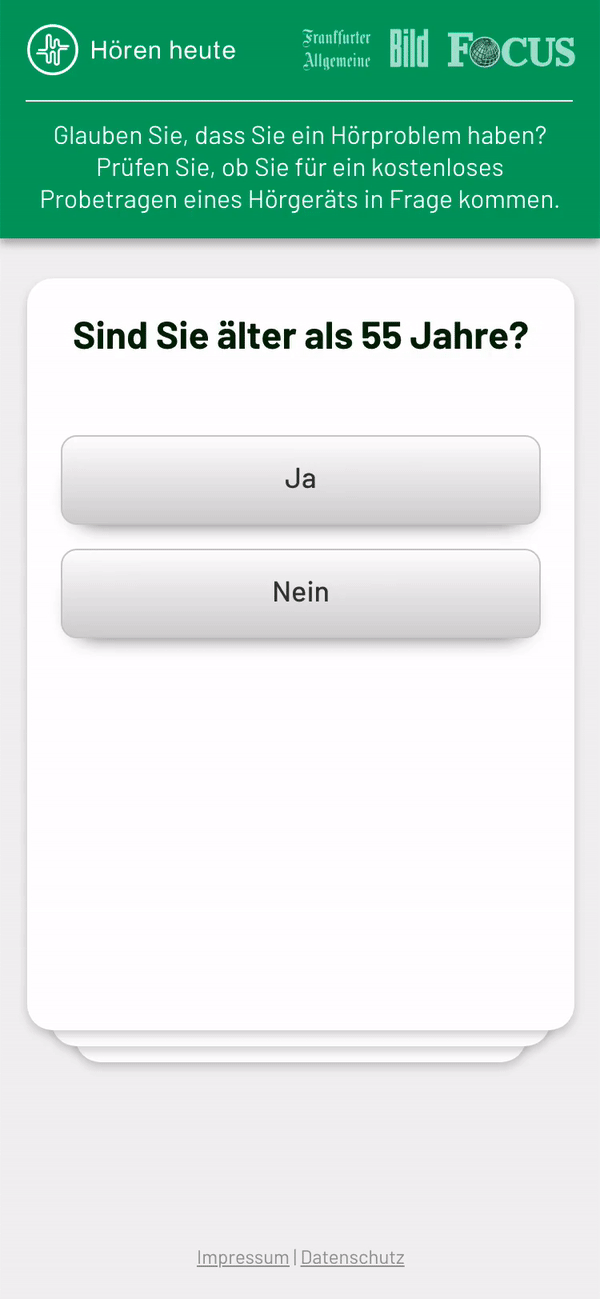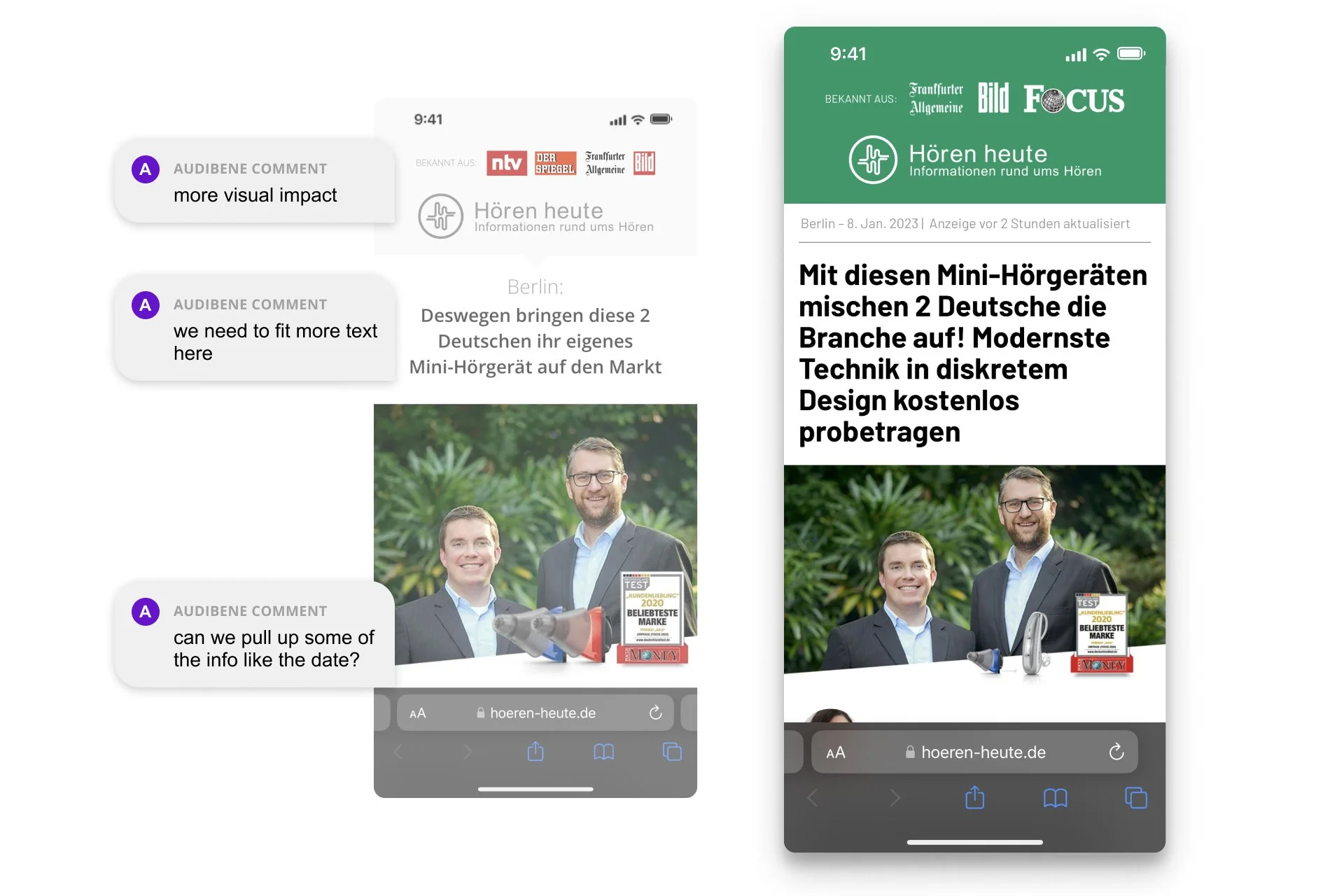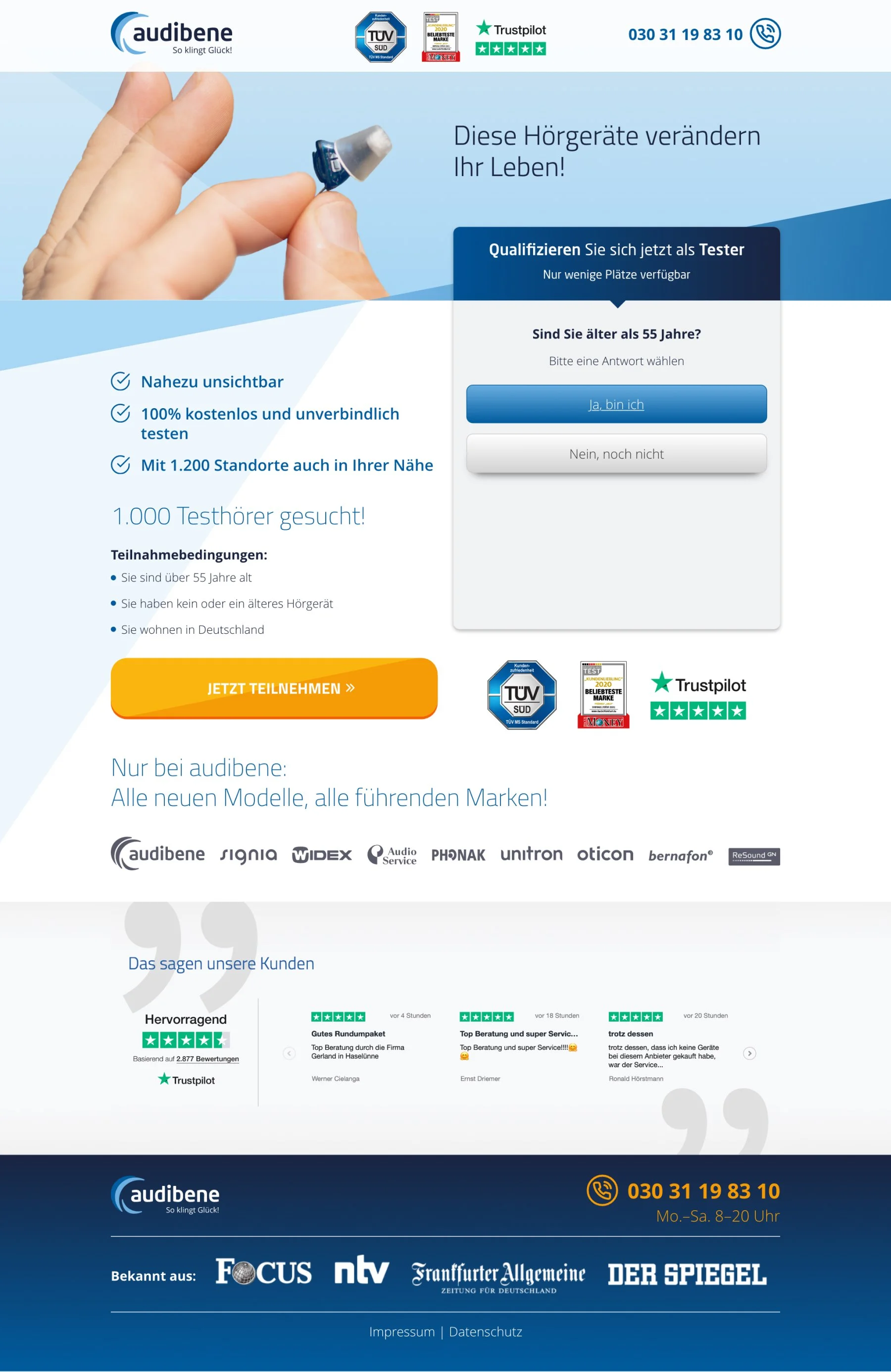Within the Customer Acquisition team at audibene, it was the responsibility of the CRO team, Front-end team, and me to deliver a seamless experience for prospective leads, streamlining the registration process while efficiently providing the necessary information before a consultant engaged with them.
Operating in an Agile environment, we conducted A/B tests across every stage of the user journey, including landing pages, questionnaires, and success pages. This approach allowed us to identify specific pain points, address them systematically, and generate targeted solutions to improve the overall customer experience.
An additional challenge involved integrating audibene’s branding initiatives into the lead generation process. This required balancing performance-driven optimization with brand-building objectives, while also managing the use of multiple sub-brands across different touchpoints.
Below is an example of a typical user flow encompassing the landing page, questionnaire, and success page. In this example, the questionnaire was designed to subtly indicate the existence of multiple registration steps, without presenting a fixed number that could potentially demotivate users.



From left to right: old version of one of our most successful landing pages overlaid with the redesign goals. Next to it the redesign version which became the next best performer.
Continued improvement
We operated in an Agile environment, iterating through design and technical solutions on a bi-weekly cadence. One of the most successful iterations (illustrated above) represented a paradigm shift in the design of our landing pages and similar pages across multiple audibene sub-brands.
The core challenge was to incorporate more textual content without creating an overwhelming, “infinite scroll” experience or presenting users with dense, impenetrable walls of text.
To address this, I proposed three fundamental design changes that not only improved usability but also maintained a conversion rate uplift above 10%, establishing the page as a new top performer:
Narrower fonts: By optimizing character width per row, copywriters were able to craft longer, more meaningful titles without compromising readability.
Enhanced color palette: A stronger, strategically applied color scheme drew users’ attention to key trust elements and interactive components, improving both comprehension and engagement.
Image reuse and standardization: By aligning hero and contextual images with common ad ratios, designers saved time producing assets, and we created visually coherent user journeys that reinforced brand consistency across multiple touchpoints.
These seemingly simple adjustments collectively transformed the landing page experience, balancing richer content, visual clarity, and measurable performance gains.
Above: extract from one of the four different component libraries I introduced to the team. Two libraries focused on Tokens and Atoms, while the other two focused on common elements for the web and email.
Branding and performance
Since 2020, audibene has been actively pursuing a brand redesign. As part of this initiative, my role included translating existing pages into the new audibene design language while ensuring that performance metrics were maintained or ideally, improved.
For these redesigns, I retained the underlying page structure as a wireframe and focused on enhancing it based on insights gathered from prior user research and testing.
Our usability tests highlighted several key drivers of user trust and engagement: prominently displayed trust logos, large and compelling product and lifestyle imagery, high-contrast, easily tappable/clickable buttons, and legible customer reviews. Integrating these elements into the redesigned pages allowed us to align with the new brand identity while optimizing for user confidence and interaction.
From left to right: old version of one of our most successful landing pages overlaid with the redesign goals. Next to it the redesign version which became the next best performer.



